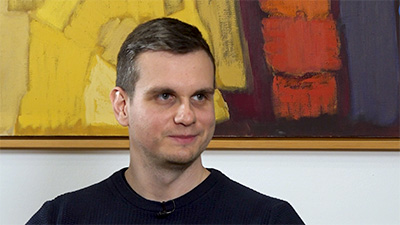Dr Jaka Vodeb from Department of Complex Matter at the Jožef Stefan Institute has published a study in Nature Physics in which he has used quantum simulation to gain valuable insight into a well-known physical phenomenon, the false vacuum decay. Together with colleagues from the University of Leeds, the Forschungszentrum Jülich, where Dr Vodeb did his postdoctoral education, and the Austrian Institute of Science and Technology (ISTA), they sought to understand the key puzzle of the false vacuum decay and the mechanism behind it. The experiment involved placing 5564 qubits - the basic building blocks of quantum computing - in specific configurations to represent a false vacuum. By carefully controlling the system, they were able to trigger a transition from a false vacuum to a real vacuum, mirroring the formation of bubbles as described by the theory of false vacuum decay. Although this process could trigger a significant change in the structure of the Universe, predicting its timing is difficult; it is likely to occur over a period that could last millions or even billions of years.

